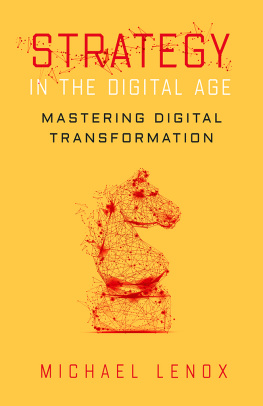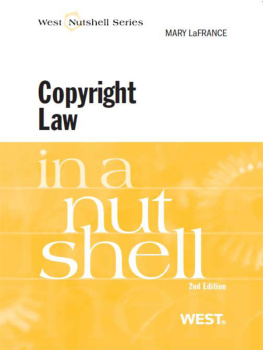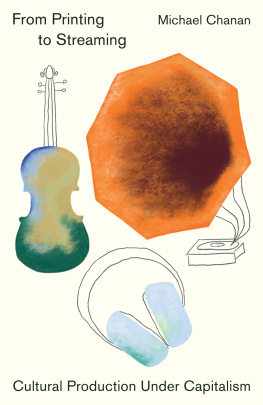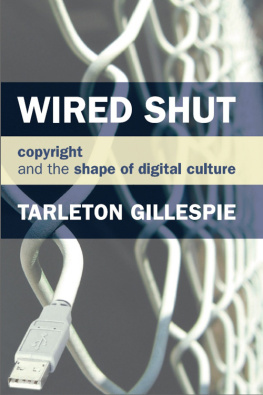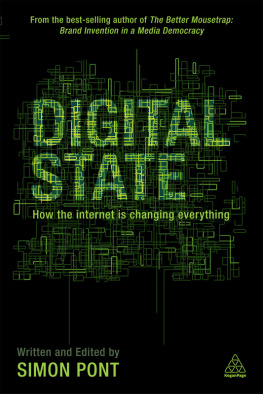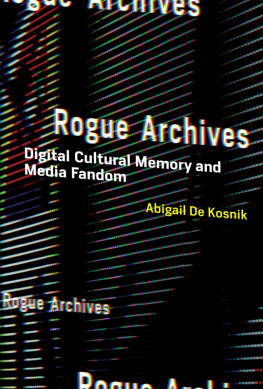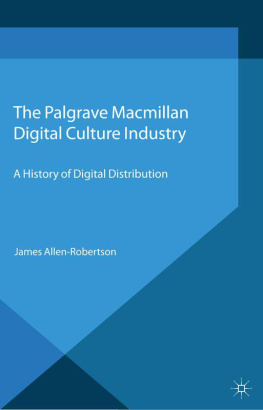Digital Prohibition
Piracy and Authorship in New Media Art
CAROLYN GUERTIN
M y journey toward completing this book was far from solitary. I had the company of students, colleagues, friends and family. I could not have arrived at this point without them. I would like to thank the Social Sciences and Humanities Research Council of Canada for two generous grants: a SSHRC doctoral fellowship (19982000) at the University of Alberta and a SSHRC Postdoctoral Fellowship (20046) at the McLuhan Program in Culture and Technology at the University of Toronto. The Provosts Office at the University of Texas at Arlington also generously recognized me with a coveted faculty development leave in the fall of 2009, and the College of Liberal Arts backed it up with travel funds. Those funds and acknowledgments of my work were accompanied by the very real support of Professors Pete Smith, Michael ODriscoll, Michael Joyce, Kevin Gustafson and N. Katherine Hayles. Ive also been blessed with friends in my chosen field as well, and I want to thank Maximiliaan van Woudenberg, Rene Turner, Rita Raley, Kate Pullinger, Sue Thomas, Talan Memmott, and Jsus Octavio lizondo Martinez for their cheers, ears and critiques. I am indebted to artists who graciously shared their time and insight in interviews -- Steve Gibson, Khaled Hafez, Atteqa Malik, Mez, Huma Mulji, Feng Mengbo, Miao Xiaochun, Yifang Wang -- and to Melissa Chiu, who took time out of her busy schedule to meet with me. Thanks are owing too to the kind artists who made their images available for this book. I am grateful to my willing guinea pigs, my English 5380 students at UT Arlington and my Transart Institute students in Berlin, who let me test out my ideas on them first in graduate seminars, and especially to my graduate research assistants, Joy Sterrantino, Tricia Dupew, Jared Chambers and Johansen Quijano. I particularly want to thank my editor, Katie Galoff at Continuum, along with her team, for their patience and care, and for making the production of this book so fast and painless. My family, John, Irene, Nancy, Nick, Sarah and Ed and Bernice honor me by always being there. Finally, I am most indebted to Katherine Jin for her inspiration and support and for all of the many things she does to make my life easier every day.
P erhaps it was nowhere more apparent that capitalism and the youth of the Twentieth century are at odds than during the third week of September 2011 when the , 2011). What is at the heart of this event, Schneider argues, is community formation and a creative outpouring of ideas from everything around how to protest to how to make posters to how to reinvent government. The crowd keeps chanting, This is just practice. Time will tell what they are practicing for.
This is not just an American crisis, although OccupyLA, OccupyChicago, OccupyAustin, and OccupyDenver movements have spread since the Wall Street occupation began. Similar youth protests have occurred in squares in London, Spain, Greece, Tunisia, Libya, Syria, Bahrain, and in Tahrir Square in Egypt that have been organized and strategized through social media. As youth in country after country in the past few years have risen up to start their own Arabian Spring against repressive governments, or to protest how rotten capitalism is, or the fact that corporate interests wield more and more power and control more and more property, or that the youth of today are crippled
What the multitude does on a daily basis is to churn out constant innovation (Hardt and Negri, 2004, 193) equal to 48 hours of experience, knowledge and desire will be the catalyst for change. They say that When communication is the basis of production, then privatization immediately hinders creativity and productivity (2004, 185), since it is the multitude that is the very life force of a society. As private property has destroyed the notion of things shared and used in common, it is the force of the multitudes creative energies applied in communication, collaboration and cooperation that is the primary characteristic of the new dominant forms of labour today (2004, xv). Anyone who works with information or knowledge relies on the common knowledge passed down from others and in turn creates new common knowledge (2004, xv). This is a fact that is brought home to us more every day as youth uprisings around the globe are rewriting governments (or trying to do so) from the ground up. But as digital technologies make it easier and easier to organize demonstrations, they are also facilitating a new model of creativity based on the ascendant model of production in the Twenty-first century: the remix.
I n the influential book Location of Culture (1994), Homi Bhabha uses the concepts of mimicry, interstice, hybridity, and liminality to argue that cultural production is always most productive in spaces where it is most ambivalent. A major site of ambivalence in the realm of creative practices, media as a vehicle for social reform and aesthetic expression, and some of the potentialities in the social nature of electronic works literary, artistic, and viral to create new kinds of creative practices, and new spaces for the rise of alternative artistic, authorial, or publishing models.
Authorship is a collaborative act. In fact, prior to the Nineteenth century in the West all authorship was seen to be a collective exercise, with writers standing on the shoulders of the giants that came before them. Even in our contemporary world, editors, publishers, critics, mentors, literary muses, and collaborators all form a part of the web that is the text, revealing the lie in the myth that the book is a solitary act. Andrew Bennett argues that it was Romantic ideology most conspicuously put forward by William Wordsworth that embedded the author as an owner of the work, a concept that would ultimately become enforceable in law (Bennett, 2005, 100). Compare the literary author model to a film production crew or to the creators of a medieval cathedral or a video jockey at a rave, and we can see how the whole idea of true collaboration becomes impossible within the confines of the literary volume as we have known it. In the art world too, gallery owners tend not to be interested in collaborative artworks because it is the single name on the objet dart that sells.
It is in the postmodern world that this Romantic construct becomes troubled. Roland Barthes proclaims the Death of the Author when he redefines the text as a multi-dimensional space in which a variety of writings, none of them original, blend and clash (Barthes, 2005, 15). For Barthes, the text is a negative space and the text-as-intertext (that is to say, a text interrelated to other works) eliminates the central, controlling power of the individual from its very conception. Michel Foucault in his answer to Barthes piece What is an Author?, sees the author function also in spatial terms, as a space into which the writing subject constantly disappears (Bennett, 2005, 20). According to Foucault, this author function emerges as a principle of ownership or possessive individualism in the Eighteenth century with the arrival of copyright law (Bennett, 2005, 23). Individualitys arrival can also be tied to the technology of the printed book, which helps birth public and private space just as surely as the fencing of the English Commons produced enclosures.
The notion of the solitary author model makes sense when the book or work of art is seen as part and parcel of property values. Mark Rose in


